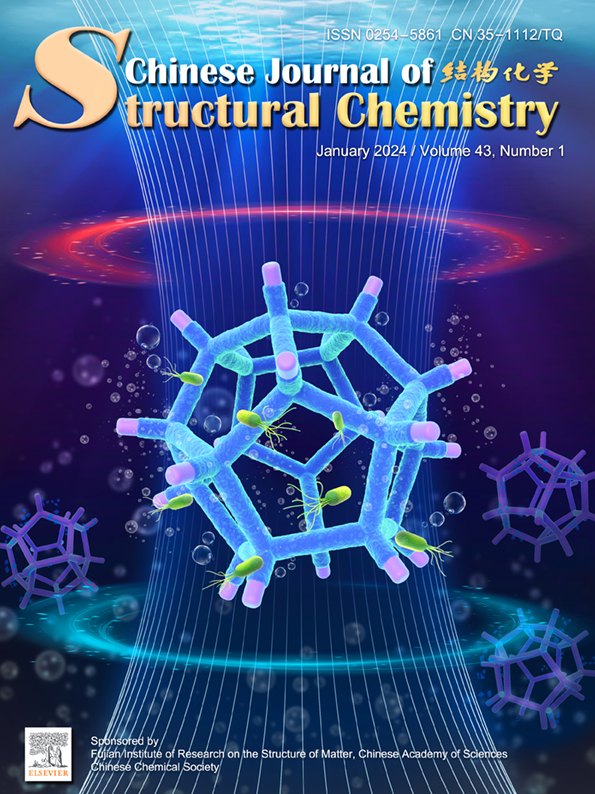
Cover Picture
Submit a Manuscript
Magnetic
field-assisted microbial corrosion construction ironsulfides incorporated
nickel-iron hydroxide towards efficientoxygen evolution
Xianzheng Zhang, Yana Chen, Zhiyong Ye, Huilin Hu, Ling Lei, Feng You, Junlong Yao, Huan Yang*, Xueliang Jiang*
Atomically dispersed Mn enhanced catalytic performance for overall water splitting on graphdiyne-coated copper hydroxide nanowire
Lu Qi, Zhaoyang Chen, Xiaoyu Luan, Zhiqiang Zheng, Yurui Xue*, Yuliang Li*
Chin. J. Struct. Chem., 2024, 43: 100197. DOI: 10.1016/j.cjsc.2023.100197
January 15, 2024
ABSTRACT
Atomic catalysts (ACs) have been considered as promising catalysts for efficient hydrogen production through water splitting. Herein, we report an AC with single Mn atoms highly dispersed on the surface of graphdiyne-coated copper hydroxide nanowire arrays (Mn–GDY/Cu(OH)x NWs). By anchoring Mn atoms on GDY, the specific surface area, the number of active sites, and the stability of catalyst are greatly improved. Detailed characterizations reveal that the high hydrogen and oxygen evolution reaction (HER/OER) catalytic activity of the catalyst is induced by strong incomplete charge transfer effect between the metal atoms and GDY. These advantages enable the electrocatalysts to drive a current density of 10 mA cm−2 at low overpotentials of 188 and 130 mV for OER and HER, respectively, together with excellent long-term stability. Remarkably, the alkaline electrolyzer using Mn–GDY/Cu(OH)x as both cathode and anode electrodes can reach 10 mA cm−2 only at a much low cell voltage of 1.50 V.







